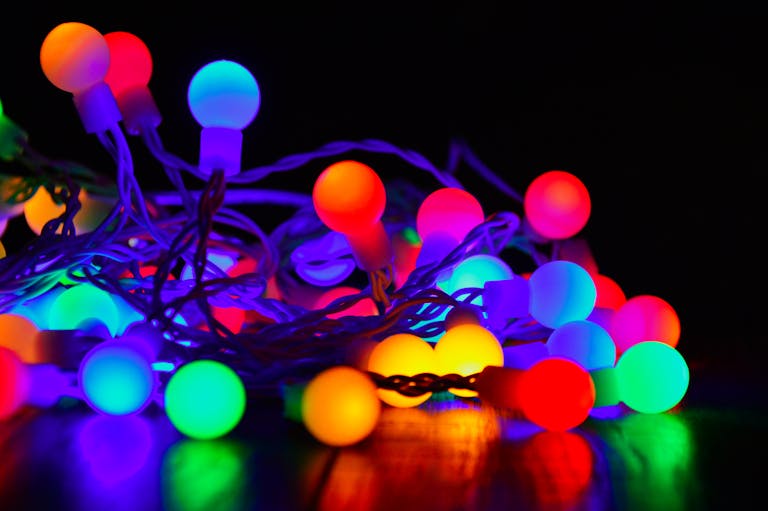Intrauterine Device (IUD)
An Intrauterine Device or IUD is a long acting, highly effective and reversible contraceptive method. The IUD is a small, flexible plastic device that is inserted into the uterus to prevent pregnancy.
Quick IUD comparison
Use the quick reference chart to compare these IUDs (PDF). In Canada there are 2 categories of IUDs currently available:

- Copper IUD (non-hormonal) (various models are available)
- Hormone containing IUDs
- Mirena IUD (contains levonorgestrel)
- Kyleena IUD (contains levonorgestrel)
The Copper can be used for up to 5 or 12 years (depending on the type) to prevent pregnancy. Mirena has recently been approved for contraceptive use for up to 8 years (bleed control up to 5 years) and Kyleena can be used for up to 5 years.
IUDs do not protect against sexually transmitted infections. We recommend using a barrier method (condom, dam, glove) with an IUD to reduce the risk of STIs.
At ISHS, we offer specialized IUD insertion clinics every week. Make an appointment to see a health care professional about getting an IUD. Please indicate when booking if you are interested in pursuing this as an option so an appropriate appointment will be given. IUDs are now covered at no cost in BC for those clients who have MSP.
IUDs in detail
How to get an IUD
Make an appointment at our clinic to begin the process of getting an IUD. More than one appointment may be necessary to have an IUD inserted at ISH. Pharmacists in BC can also prescribe IUDs but you’ll have to find a clinic to follow up with for insertion. There is no cost for an IUD in BC if a user has active MSP coverage.
If you are looking for an IUD clinic in other areas of Canada, the RAICE website will help you locate a clinic.
Pre-insertion education and screening
Before getting an IUD, you may have an orientation session with one of our healthcare professionals that will outlines the benefits. side effects and risks and to determine whether you can safely use and IUD. This appointment is also an opportunity to ask any questions you may have about the IUD and the insertion process.
All clients wanting an IUD must call to schedule an appointment for insertion. If you already have a prescription, please indicate this when you call for an appointment. If you require an insertion to use the IUD as Emergency Contraception, please tell the medical office assistant on the phone so you can be booked within an appropriate time frame. Please note the either the copper or Mirena IUD can be used as an extremely effective (99%+) form of emergency contraception if inserted within 7 days after sex. They can remain in place for the indicated duration 5, 8, or 12 years depending on the model.
The cost of an IUD and the insertion insertion is covered through your provincial medical services coverage if you have BC MSP.
If you cancel, reschedule or change your insertion appointment less than 48 hours before your insertion, you will be charged a $50 administration fee that is payable immediately. You will not be permitted to book another insertion until this fee is paid. This fee is to prevent last minute cancellations and changes to our IUD schedule that could impact other patients.
IUD insertion appointment details
- After seeing a health care provider for a pre-IUD consultation; you will schedule an insertion appointment.
- During your insertion appointment, there will be a physician and possibly a clinical learner (physician or nurse) attending to you. If you have any concerns about this please notify the front desk staff.
- Arrange to pick up your IUD at the pharmacy a few days before your appointment. At your pre-insertion consultation, please request the health care provider fax an IUD prescription for you to the pharmacy of your choice. FYI: The box an IUD comes in can be large as your IUD is pre-loaded into a single use sterile insertion tool. Make sure to bring the box to your IUD insertion appointment!
- Pre-insertion birth control:
- Use a reliable form of contraception (IUD, NEXPLANON arm implant, oral contraceptive pill, EVRA patch, Depo Provera injection, NUVA ring, condoms) until your IUD insertion. You will be given instructions on how long to continue your method following insertion.
- If NOT using one of the above options, please abstain from VAGINA-PENIS intercourse for 2 weeks prior to your IUD insertion, OR abstain from the start of your most recent period/bleed (whichever comes later = whichever time frame is shorter).
- If you HAVE NOT been able to follow the above instructions, please still come to your IUD appointment and let the clinician inserting your IUD know. This is not ideal, but it is likely that your IUD can still be placed as planned, and a follow up plan created to ensure you are not pregnant.
- Eat a typical meal for yourself about 90 min before your appointment.
- Take 800mg Ibuprofen (Advil) 1 hour prior to the appt. (if allergic, ask about alternatives).
- If given a prescription for Ativan, to help with pain or anxiety, DO NOT DRIVE to or from the appt. (have someone drive you), and take it about 30 min before your appointment.
- Please arrive for your appointment on time (at the check in time given to you by the front staff). A urine pregnancy test will be done at this time, so please arrive prepared to provide a urine sample. This test will NOT detect an early pregnancy that has occurred within the past 14 days.
- Expect some strong cramping that should settle within minutes in most cases.
- Occasionally, some people feel nauseous or light headed for a few minutes right after the procedure. This passes quickly, but we would advise you to stay laying down until feeling better, and we will offer you juice &/or snacks to help as well.
- If possible, bring a companion that can drive you home.
Following your IUD insertion
- Refer to the IUD Patient Copper Aftercare or Mirena/Kyleena Aftercare sheets you’ve been given
- After insertion it is normal to experience some cramping and light bleeding. If this feels more uncomfortable than during a menstrual period, contact the clinic to book an appointment to be seen.
- Please refer to your aftercare instructions as you will have to check your IUD strings regularly to ensure proper placement.
- A follow-up appointment is recommended 4-6 weeks following your insertion. If you are experiencing pain or cannot feel the strings before your follow up appointment, you should abstain from sex or use a back up birth control method (condoms) until you can be examined by a physician if you are using an IUD for pregnancy prevention.
How IUDs work
The main way that an IUD works is to prevent fertilization; the copper utilizes copper to achieve this while the Mirena and Kyleena use a progesterone type hormone. An IUD does NOT cause an abortion.
An IUD is a very effective method of pregnancy protection. They are 99+% effective at preventing pregnancy. They do not prevent Sexually Transmitted Infections, so we always recommend use of barriers such as condoms, dams and gloves to help reduce the risks and regular testing.
Copper IUD
The copper IUD has a T-shaped plastic frame wrapped in copper wire. The copper is slowly released into the uterine cavity.The Copper ions in the uterine fluids are toxic to sperm. The Copper IUD stops sperm from making their way through the uterus into the fallopian tubes reducing the ability of the sperm to fertilize an ovum. Ovulation is not affected. The copper IUD is highly effective. Among typical users approx. 8 in 1000 users (.8%) will experience a pregnancy in the first year of use.
Copper IUD as Emergency Contraception
The copper IUD or the Mirena IUD can be inserted within 7 days after intercourse and is 99.2% (.8% or 8 pregnancies per 1000 users) effective against pregnancy. One of the other benefits of using an IUD as emergency contraception is that it can remain in the uterus for up to 5 or 10 years (depending on the type) as a long term method. This option is not available as a drop-in service and is only available with an appointment at our Quadra Street location.
The cost of the Copper IUD is covered for clients who have active MSP coverage.
We are proud to be a member of RAICE or Rapid Access IUC Centres of Excellence. To find other clinic locations across Western Canada who offer Emergency IUD insertions, visit emergencyiud.com
Call us for an appointment if you are interested in pursuing this option.
Mirena IUD
The Mirena IUD is a white T-shaped plastic frame which contains a hormone that is released slowly and continuously. This hormone (levonorgestrol) is a progestin much like the progesterone produced by the ovaries. There is no estrogen in the Mirena IUD. It thickens cervical mucus so sperm cannot reach the egg and it also thins the lining of the uterus. The majority of users continue to ovulate. The Mirena IUD can be used effectively for any duration of time up to 5 years. It can be removed and replaced at the five year mark if someone continues to wish using this method. The average effective hormone level in the blood is 20 mcg which is considerably lower than that of the birth control pill.
Mirena IUD as Emergency Contraception
The copper IUD or the Mirena IUD can be inserted within 7 days after intercourse and is 99.2% (.8% or 8 pregnancies per 1000 users) effective against pregnancy. One of the other benefits of using an IUD as emergency contraception is that it can remain in the uterus for up to 5 or 10 years (depending on the type) as a long term method. This option is not available as a drop-in service and is only available with an appointment at our Quadra Street location.
The cost of the Mirena IUD is covered in BC for clients who have active MSP coverage.
The Mirena is reported to have the lowest failure rate (.2% or 2 pregnancies per 1000 users) of any birth control method and is easily reversible.
Kyleena IUD
The Kyleena IUD is a white T-shaped plastic frame (the frame is smaller than the Mirena) which contains a hormone that is released slowly and continuously. This hormone (levonorgestrol) is a progestin much like the progesterone produced by the ovaries. There is no estrogen in the Kyleena IUD. It thickens cervical mucus so sperm cannot reach the egg and it also thins the lining of the uterus. The majority of users continue to ovulate. The Kyleena IUD is effective for any duration of time up to 5 years. The average effective hormone level in the blood is 12 mcg which is considerably lower than that of the birth control pill.
The cost of the Kyleena IUD is covered for clients who have active MSP coverage.
The Kyleena is reported to have a similar failure rate to the Mirena (.2% or 2 pregnancies per 1000 users during 1st year of use) and is easily reversible.
IUD advantages and disadvantages
Advantages of the IUD include:
- Highly Effective
- Safe, private and continuous protection for up to 5 or 10 years for the Copper or up to 5 years for Mirena and Kyleena.
- Convenient: all you have to do is check for the strings each month.
- 99.2% effectiveness for the copper/99.8% for the Mirena and Kyleena
- Reversibility
- Low cost (over time)
- Research suggests that both the Copper and Mirena IUDs reduce the risk of endometrial cancer.
- Mirena decreases menstrual cramping and dramatically decreases menstrual blood loss ( ~90% reduction in menstrual blood loss). Mirena can reduce the pain of endometriosis.
- Copper, Mirena and Kyleena are all suitable choices for users who cannot or do not wish to use estrogen containing methods including breas/chestfeeding users.
Disadvantages of the IUD include:
- Potential for increased menstrual cramping and blood flow with Copper devices – up to 50% increase experienced by most users. Increased cramping during menstruation is experienced by most copper IUD users but if it is more than expected, and not improving with treatment, contact the clinic for further assessment. Consider taking ibuprofen (Advil) for the first few days of your regular periods/bleeds to minimize both the amount of bleeding and cramping going forward.
- Irregular bleeding/spotting for 2-6 months after the insertion of a Mirena and Kyleena. In most users, there is a trend over time towards less frequent and shorter episodes of bleeding. Some users stop getting regular menstrual bleeding, this is safe.
- Hormonal side effects with Hormonal IUD use are uncommon. The amount of levonorgestrel that transfers into the bloodstream is only 5-10% of the birth control pill (Mirena avg 20µg/day and Kyleena avg 9µg/day). Uncommon side effects (1-10% of users) may include headache, acne, mood changes, ovarian cysts, an increase/change in vaginal discharge and/or breast pain.
- There is a 1-10% chance of side effects including irregular bleeding, heavier or lighter periods, headaches, acne/oily skin, ovarian cysts and abdominal/pelvic pain.
- There will be brief discomfort at the insertion of the IUD. This is normal and the degree of discomfort will vary from person to person.
- An IUD does not provide protection against sexually transmitted infections. We encourage the use of barriers to reduce the risk of STIs and add pregnancy protection.
Risks of any IUD insertion include:
- Expulsion: 5% (5 in 100) risk of IUD expulsion (partially or fully “falling out”), highest risk in first 2 months post insertion. If using a menstrual cup, make sure to completely break the suction/seal before removal EACH TIME to minimize risk of accidental expulsion, or consider a non-suction based menstrual cup (Nixit).
- Infection: <1% (less than 1 in 100) risk of pelvic infection within the first 3 weeks. Vaginal STI swab is recommended the day of the procedure to limit this risk.
- Perforation: 0.1% (1 in 1000) risk of uterine perforation during the procedure. Somewhat higher risk <6 wks postpartum or in breast/chest feeding users, but it is still reasonable to proceed with insertion most of the time.
IUD Removal
Removing an IUD is usually a simple process that can happen during a typical office visit with any of our doctors. A doctor removes an IUD by inserting a speculum and using the threads to slide the IUD out from the uterus through the cervix. Some users may experience some brief cramping during removal but usually not to the extent of cramping experienced during insertion.
If you want to become pregnant the IUD can be removed at any time of your cycle.
If you don’t want to become pregnant, a user must abstain from vaginal intercourse for 7 days prior to removal or have begun a hormonal method at least 7 days prior to removal to minimize the risk of pregnancy.
Island Sexual Health is a member of RAICE (Rapid Access IUD Centres of Excellence). RAICE is a network of clinics and health care providers across Canada who are experts in IUD insertion and care.
RAICE clinics must meet the following criteria:
- have an expert IUD insertion team;
- accept patients making their own appointments without referral by their health care provider;
- appointments for IUD discussion and insertion made quickly;
- offer training in their communities to the public and/or to other health care providers;
- are committed to continuously improving the care they provide;
- must provide access to the copper IUD as emergency contraception.
Visit the website to find the nearest RAICE clinic near you.







